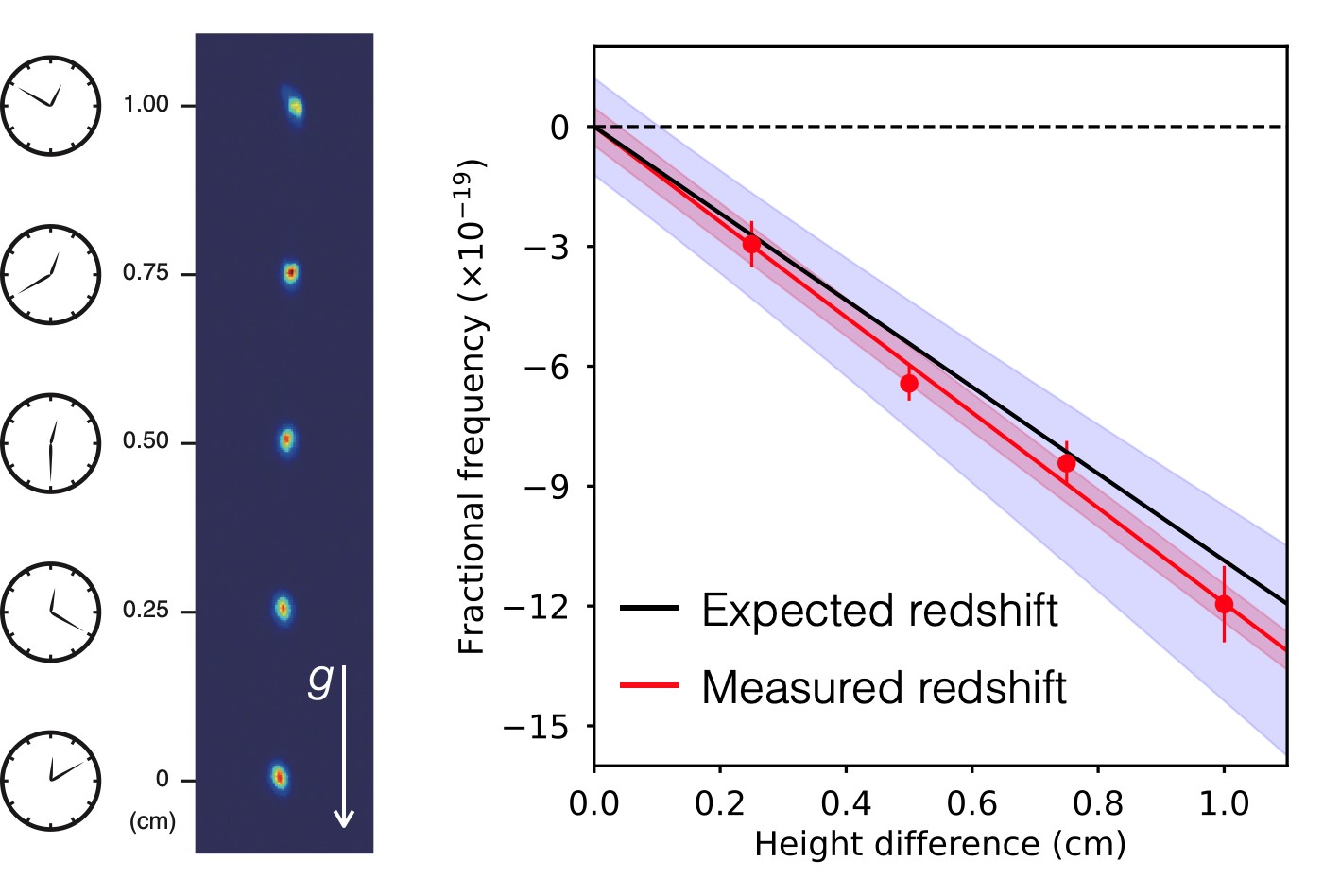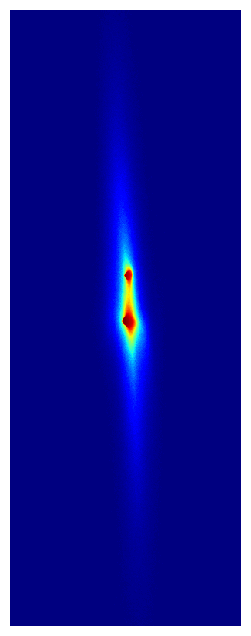Center for Fundamental Physics (CFP)
With Tabletop Experiments
Shimon Kolkowitz at the University of Wisconsin, Madison
A Multiplexed Optical Lattice Clock to Search for New Physics



With support from the CFP Templeton grant, we constructed a new kind of strontium optical lattice atomic clock experimental apparatus, which we call a multiplexed optical lattice clock. This apparatus is designed specifically to harness the precision of optical clock comparisons for tests of fundamental physics and searches for new physics. We have now demonstrated the capability to perform simultaneous differential comparisons between multiple ensembles of strontium atoms with both precision and accuracy at the level of 10−19, and have leveraged this capability to perform a blinded precision test of the gravitational redshift for mm to cm gravitational potential differences. In the process, we have learned how to improve the accuracy and precision of absolute optical lattice atomic clocks. Going forward we expect to soon use our apparatus to perform a direct test of the Einstein Equivalence Principle.
- Does gravity behave as Einstein predicted?
- Do the most precise predictions of the Standard Model description agree with what can be measured to high precision?
- What is (or is not) dark matter?
- Shimon Kolkowitz, Faculty
- Xin Zheng, postdoc
- Jonathan Dolde, graduate student
- Hong Ming Lim, graduate student
- Varun Lochab, graduate student
- Jacques Van Damme, graduate student
- Nico Ranabhat, undergraduate student
- Haoran Li, undergraduate student (now a graduate student at UCSB)
- Brett Merriman, undergraduate student (now a graduate student at UIUC)
With support from the CFP Templeton grant, we constructed a new strontium optical lattice atomic clock experimental apparatus dedicated to tests of fundamental physics and searches for new physics. We designed this apparatus to enable the novel capability to prepare multiple spatially resolved ensembles of strontium atoms in the same vacuum chamber, and to perform clock comparisons between these ensembles using differential synchronous Ramsey spectroscopy. In intercomparisons between two spatially separated atom ensembles in the same lattice (separated by 0.6 cm and each containing roughly 2400 atoms) we have observed atom-atom coherence times exceeding 30 seconds (despite a measured clock laser-atom coherence time of only 100 ms), and have measured a differential stability of 9.7 × 10−18/Hz1/2 over a 3.3 hour averaging time, resulting in a measured differential fractional frequency precision of 8.9 × 10−20, or put in other words we were able to measure the frequency difference between the two clocks with better than 19 digits of precision.
Extending beyond comparisons between two ensembles, we demonstrated simultaneous differential comparisons between 6 spatially separated clouds of strontium in our apparatus, resulting in 15 unique pairwise clock comparisons performed in parallel, each with a measured differential stability of roughly 3 × 10−17/Hz1/2. We also demonstrated the capability to simultaneously load heterogeneous pairs of all four stable isotopes of strontium into spatially resolved ensembles in the lattice, which will enable precision isotope shift comparisons for searches of new physics.
Most recently, we completed a full systematic evaluation of all the sources of differential frequency shifts between multiple atom ensembles at the 10−19 level. This systematic evaluation was performed with an applied offset blind to avoid biasing our results. In the process, we observed spatially dependent systematic clock shifts that to our knowledge had not previously been observed, including a blackbody radiation gradient, and a tensor ac Stark shift gradient. The characterization of these systematic effects, and the techniques we developed to characterize them, will aid future absolute clocks.
Achieving accuracy and precision at the 10−19 level means that we now are sensitive to the gravitational redshift due to millimeter scale height differences. Using differential clock comparisons within an evenly spaced array of 5 atomic ensembles spanning a total height difference of 1 cm, we measured a fractional frequency gradient of [-12.4 ± 0.7(stat) ± 2.4(sys)] × 10−19/cm, consistent to within 1 sigma of the expected gravitational redshift gradient of -10.9 × 10−19/cm, and inconsistent with zero gravitational redshift at a 4.4 sigma confidence level. Our measurements can also be viewed as a demonstration of sensitivity to relativistic time dilation due to gravitational potential differences on the surface of the Earth with 1.3 mm resolution. These results represent a labbased test of relativity at a new length scale, and also demonstrate the potential of local-oscillator independent synchronous differential clock comparisons for emerging optical clock applications such as relativistic geodesy, dark matter searches, and gravitational wave detection.
We are currently in the middle of a detailed and comprehensive set of measurements to develop a complete model of depolarization and atom loss in strontium optical lattice clocks. We are performing lifetime measurements of atoms prepared in the 1S0, 3P0, and 3P2 states, where we simultaneously monitor the populations in all three states as a function of time and trap depth for various initial conditions. We are also performing nuclear-spin-state resolved measurements to determine the impact of lattice Raman scattering. We anticipate that these measurements will constitute the first unambiguous direct measurement of the radiative lifetime of the 87Sr 3P0 excited clock state, and will provide insights into how to improve the stability of both differential clock comparisons and absolute clock measurements. We expect to complete these measurements by the end of December, 2022.
In addition, with supplemental CFP Templeton support, we purchased a new Ti:Sapphire laser with intra-cavity EOM that we expect will enable us to reduce the in-lattice heating of strontium atoms in our lattice, extending the atom lifetime in the lattice and therefore the achievable interrogation time at low lattice depths. We anticipate that this will enable us to reach new levels of differential stability, which we will leverage to perform the first direct test of the Einstein Equivalence Principle by directly comparing the gravitational redshift due to Earth’s gravity on multiplexed clock arrays to the effects of linear accelerations on the same clock arrays.
Finally, in the process of analyzing the results described in our answer to prompt 3, we realized that by simultaneously interrogating two ensembles with a clock laser instead of one, we can also increase the performance of absolute clock measurements by doubling the coherent interrogation time in Ramsey spectroscopy before a phase slip occurs for a given local oscillator coherence time. This is because by using two ensembles with a fixed detuning between them, it is possible to unambiguously determine the accumulated phase in the full range from −π to π, instead of from −π/2 to π/2. We plan to demonstrate this enhancement in absolute clock performance within the next year.
- X. Zheng, J. Dolde, H.M. Lim, and S. Kolkowitz, “A lab-based test of the gravitational redshift with a miniature clock network,” arXiv:2207.07145 (2022). Under review. https://arxiv.org/abs/2207.07145 - (CFP Templeton support is properly acknowledged.)
- X. Zheng, J. Dolde, V. Lochab, B.N. Merriman, H. Li, and S. Kolkowitz, “Differential clock comparisons with a multiplexed optical lattice clock,” Nature 602, 425-430 (2022). https://www.nature.com/articles/s41586-021-04344-y - (CFP Templeton support is properly acknowledged.)
- V. Schkolnik, et al. “Optical Atomic Clock aboard an Earth-orbiting Space Station (OACESS): Enhancing searches for physics beyond the standard model in space.” Quantum Sci. Technol. 8 014003 (2023). https://iopscience.iop.org/article/10.1088/2058-9565/ac9f2b - (CFP Templeton support is properly acknowledged.)
- J. Van Damme, X. Zheng, M. Saffman, M.G. Vavilov, and S. Kolkowitz, “Impacts of random filling on spin squeezing via Rydberg dressing in optical clocks,” PRA, 103, 023106 (2021). https://journals.aps.org/pra/abstract/10.1103/PhysRevA.103.023106 - (CFP Templeton support is properly acknowledged.)
- J. Dolde, H.M. Lim, X. Zheng, and S. Kolkowitz, “Direct observation of radiative decay on the 87Sr clock transition,” in preparation, anticipated publication in 2023.
- H.M. Lim, J. Dolde, X. Zheng, and S. Kolkowitz, “Improved absolute optical clock stability using pairs of ensembles,” in preparation, anticipated publication in 2023.
- Authors TBD, “A direct test of the Einstein Equivalence Principle,” in early stages of preparation, anticipated publication in 2024.
© 2018 - Last Updated: 01/31/2023 - Disclaimer
